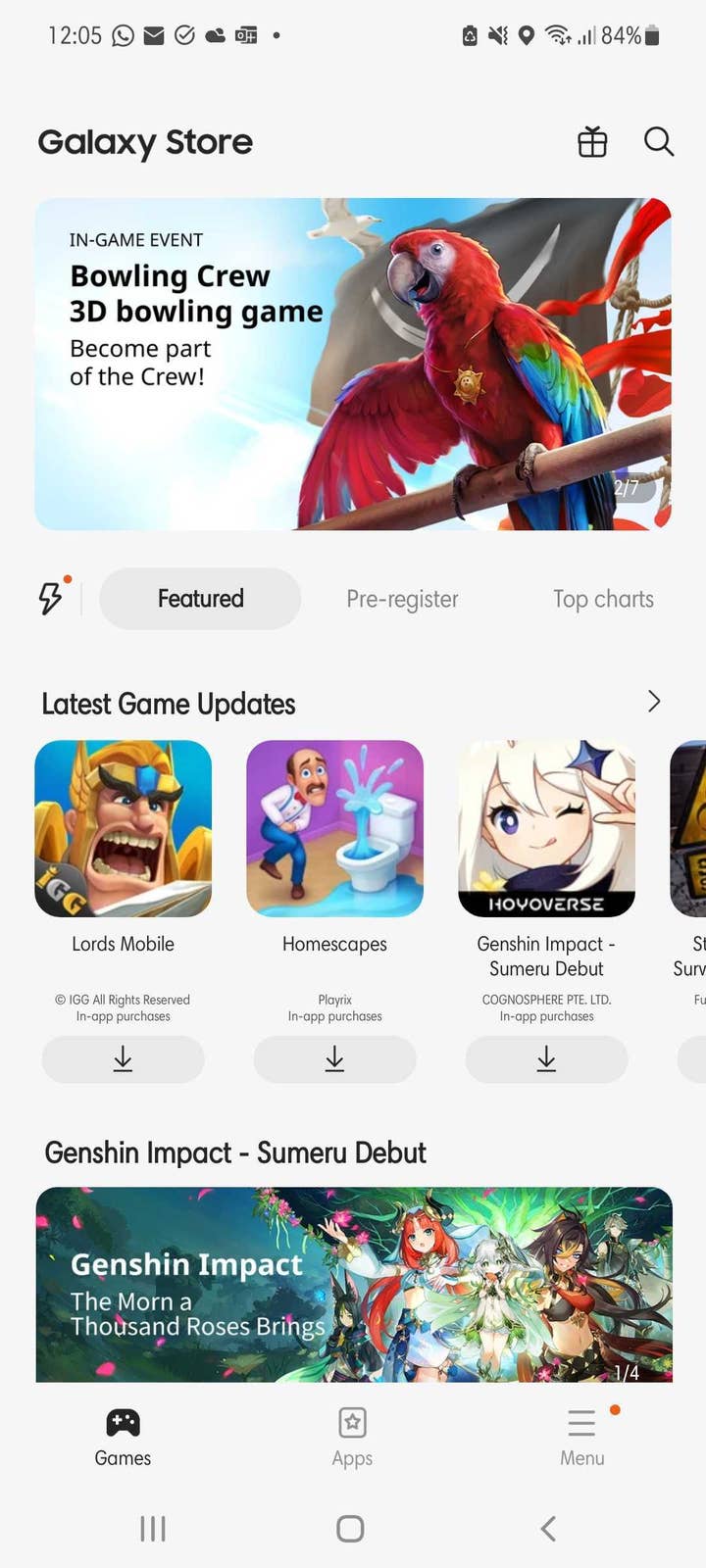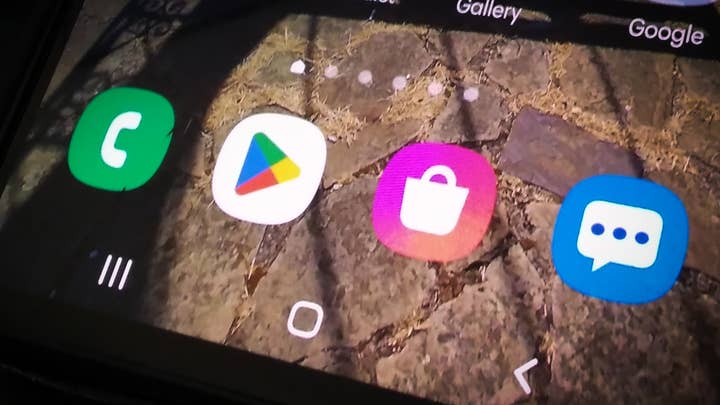How to break into the alternative app stores
Flexion's Andreas Mac Mahon goes step by step through the process of taking a game from Google Play and making it sing on other app stores
You have an Android game and it's working out fine on Google Play. But the same game can succeed on other app stores too and that's tempting. Huawei's App Gallery, the Amazon App Store, the Samsung Galaxy App Store, Xiaomi GetApps, and the One Store can bring you whole new audiences, users, you've heard, more likely to make in-game purchases. This is potentially a lucrative revenue stream… and it's for a game or games you have already developed.
Of course, life is never that easy. There are all sorts of pain points relating to moving to new app stores. However, the alternative app store space is big so if you do want to go it alone, here are a few tips for you that will hopefully make your journey smooth and successful.
There is always a checklist of things to consider. The first batch of pain comes from fragmentation driven by new commercial and technological requirements. Soon you will be publishing not just in one store, but in several.
You need to address:
- In-app payments (IAP) – most stores mandate their own payment systems or require you to bring your own billing
- In-game asset management and hosting (if you rely on downloadable assets post-install)
- Update handling
- User experience and flows to manage store-specific quirks
- Single sign-on / logins (SSO)
- Attribution across not only multiple campaigns and networks, but also to multiple campaign endpoints
- How to manage in-game advertising
There is a second batch of pain driven by new flavours of Android which lack support for Google Mobile Services (Amazon's Fire OS devices and newer Huawei devices run Android without any Google powered apps or features). This means you'll need to look at how you've implemented:
- SSO (if you use sign in with Google)
- Push notifications
- In-app advertising – fill rates may be lower, and campaigns may not convert if they rely on Google Play for downloads (as Google Play isn't present on the devices)
At this point, you may already be thinking about working with a third-party expert to help your games reach the alternative app stores. Even then, it may be useful to understand the best way to go about things. Here are my tips.
Good preparation is a key to success
Learn the stores and their requirements. Build an understanding for all target channels' requirements right up front. Plan for the differences from the outset.
Beyond technical requirements (like adding the store's own payments), there are several operation requirements that crop up in all the alternative stores. These can have an impact on the tech:

- Stores require a separate bundle ID / package name compared to Google Play
- References or linking to other stores are not allowed
- Some stores may mandate their own login / account features to be added
Make your payments handling robust - payment systems behaviour varies across stores and will be different to what you're used to in Google Play. The processing time for purchases may be different as may the way conditions are handled. Take time to understand each store - they all have quirks which you must cater for if you are to deliver a solid user experience.
Payments will be the biggest change you'll need to make to an existing game, but there are other important factors. You will also need to factor in how stores drive updates into your feature planning. Things you'll need to think about include:
1. Update handling and user messaging. Not all stores support effective auto update features, so you may need to be prepared to enhance your own in-game messaging and trigger users to manually update.
2. In-app advertising, in-app analytics and attribution or the set-ups if you work with a mobile measurement partner (MMP). This is necessary partly because of the new bundle IDs you'll be using and partly to ensure you can properly analyse and attribute data.
3. Asset handling. If your game relies on additional asset downloads, you'll need to build your own solution if you currently rely on Google Play's asset delivery.
4. If you use SSO, like log in with Facebook, you'll likely need to make tweaks to these as you're using a new bundle ID.
You cannot expect a jump in revenue simply by putting games in alternative stores. You must put time and effort into understanding the quirks of each
5. Consider your reporting and insight requirements. Do you have internal business intelligence tools which you need to have populated with transactional data from the stores? It's likely you will and so you'll need to adapt to a space where each store offers different capabilities in terms of data export and application programming interfaces (APIs compared to Google Play/iOS). There will also be differences in the level of detail in the data you're provided with.
6. Design the plumbing of your game and back-end to allow you to easily update, revise or add payment or other third-party features over time. Once you're on several stores, you'll likely face at least one update of an integrated store payments system at any given time. You will thank yourself later for considering so that you can update integrated software development kits (SDKs) with as little effort and risk as possible.
7. Plan through your development, build and testing processes to allow you to produce Android variants simultaneously when creating updates. Users in other channels expect version parity across all the mobile stores, meaning that you'll need to have all variants ready at the same time.
Preparing your organisation
Having a game which is compatible with the requirements of alternative app stores is only the first step towards success. You must also plan out live-ops and store management. Key things to think about are:
1. Take time to look at the operational requirements of the stores from the outset. A complete understanding will let you build appropriate teams and processes.
2. Accommodate differences in the ways the stores function.
3. Each store has different processes and cadences for publishing updates — you need to plan for these. Some apply their own manual QA, resulting in longer lead-times in approvals (sometimes up to several days). Some allow you to publish an approved update immediately while some have processing lead-times of a up to a couple of hours.
4. Invest in automation. Most stores today feature publishing APIs or bulk upload features, so building tools and automation on top of these will reduce cost, complexity, and risk. If you've already built automation to publish to the iOS Appstore or Google Play, you can extend this to cover the alternative stores.
5. Pay special attention to how stores handle pricing and item set-ups. If you choose not to automate, make sure you're on top of the disparate formats and methods stores use to handle pricing and store assets.
6. Look to build relationships with operational staff at the different stores if you can. This can be tricky for small developers as the stores will protect their staff, but bigger developers will likely be more successful.
Driving growth
The alternative app stores are far more actively engaged in helping you drive growth. They take an active role in promotions and incentive schemes such as loyalty points and cash-back programmes. Here are some factors to consider if you want to maximise your chances of success.
1. Ensuring feature parity is a must if you want to retain users in the alternative stores. No user wants to miss out on features or feel like they are second best compared with your iOS or Google Play users.
2. Be patient - alternative app stores have a strong organic growth component, so it takes time for games to build critical mass. Give it time and keep up your investment, and the alternative app stores will pay off.

3. Create and cultivate strong relationships with the app stores' account management teams whenever possible. Having a champion inside the store will help get things done and yield stronger promotional opportunities.
4. Give the stores plenty of fuel to drive creative thinking. They are active merchandisers. Give them visibility of coming events and updates to allow them to use these as drivers in their promotions.
5. Always say yes - stores work hard to acquire, engage and retain users in your games. Whenever possible, say yes to any ideas or proposals they run by you. They love partners who actively engage with them. By being known as a developer who helps, you'll end up with more love from the stores, resulting in more exposure and growth.
6. Offers and incentives like cash-back programmes may cause some users to migrate from one store to another. If you're on all the app stores, the users stay in your game so it's a win-win. You keep your users and competition between the stores is encouraging them to spend more in your games.
7. Most stores also have their own advertising network — you should use these for performance-based user acquisition (UA). They are still maturing and are tightly coupled to the stores which means cost per acquisition or install (CPA/CPI) rates are often competitive compared to traditional ad-networks.
8. Combine user acquisition (UA) outside the stores with in-store promotions. The tight coupling between a store and its advertising network also means that you can combine UA campaigns with in-store promotions and offers. This increases the probability of success as store promotions and loyalty schemes have a positive impact on conversion rates.
9. Make the stores feel special. Stores love when they have something that makes them unique. Lean into this and actively support promotions with, for instance, a unique item or a gifting offer unique to users of a specific store.
10. Look beyond performance-based advertising for growth. Influencer marketing is a strong growth driver for mobile games. Influencers can be part of the educational user journey that's sometimes needed to help users understand how to install or how to make the most of incentives offered by the stores. They drive up conversion rates.
The long and short of it is you cannot expect a jump in revenue simply by putting your games in the alternative app stores. You must put time and effort into understanding the quirks of each. If you do, you can expect a revenue boost of 10% or more in the first year.
More GamesIndustry.biz Academy guides
If you're looking into releasing games across multiple app stores, the following guides may be useful.
- A beginner's guide to mobile distribution
- How to find a new audience for your mobile game
- Five steps to boost your game's performance on the app stores
- The secrets to standing out on mobile app stores
Andreas Mac Mahon is chief product officer at Flexion Mobile, which operates a global distribution platform for Android games across multiple alternative app stores
